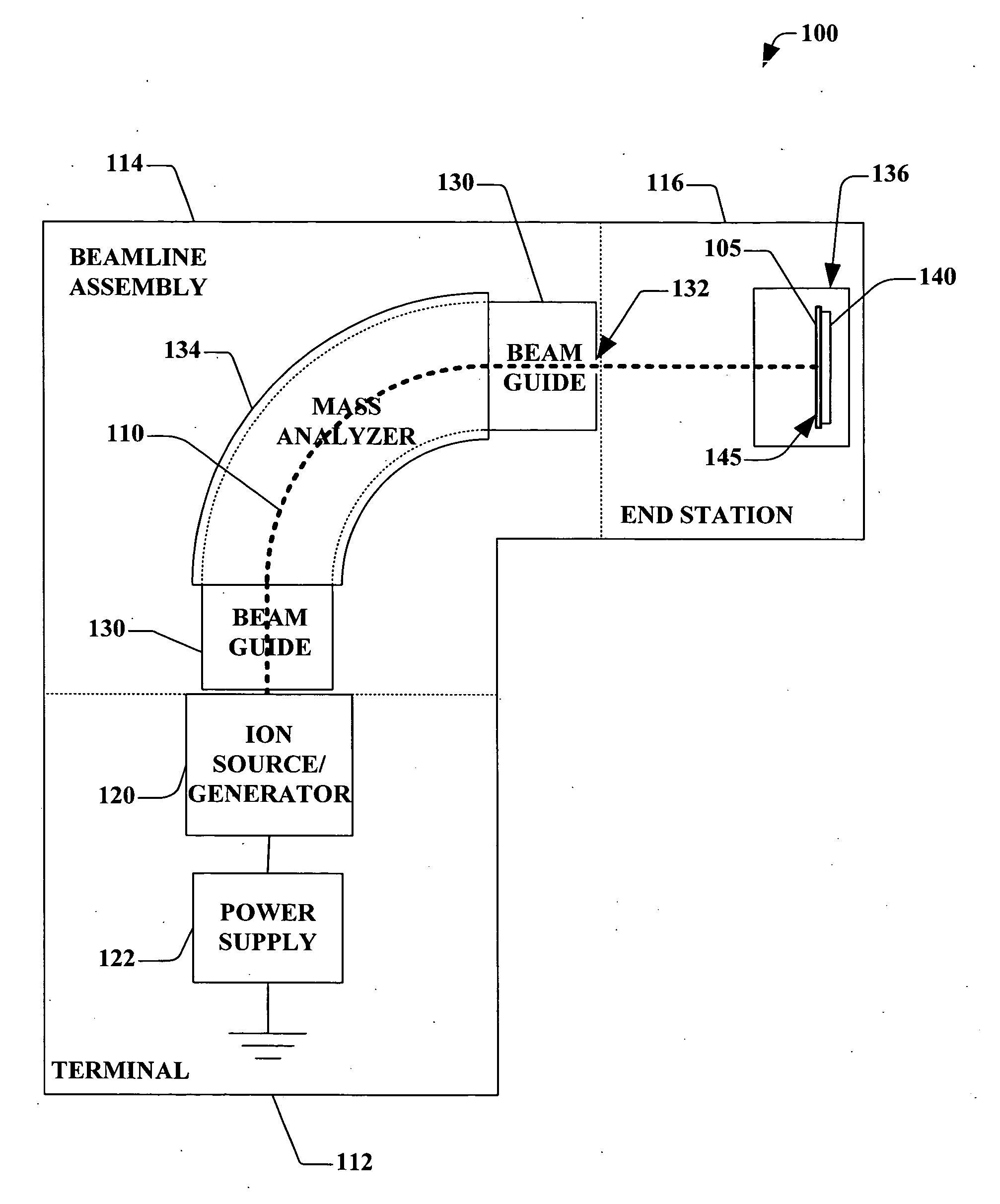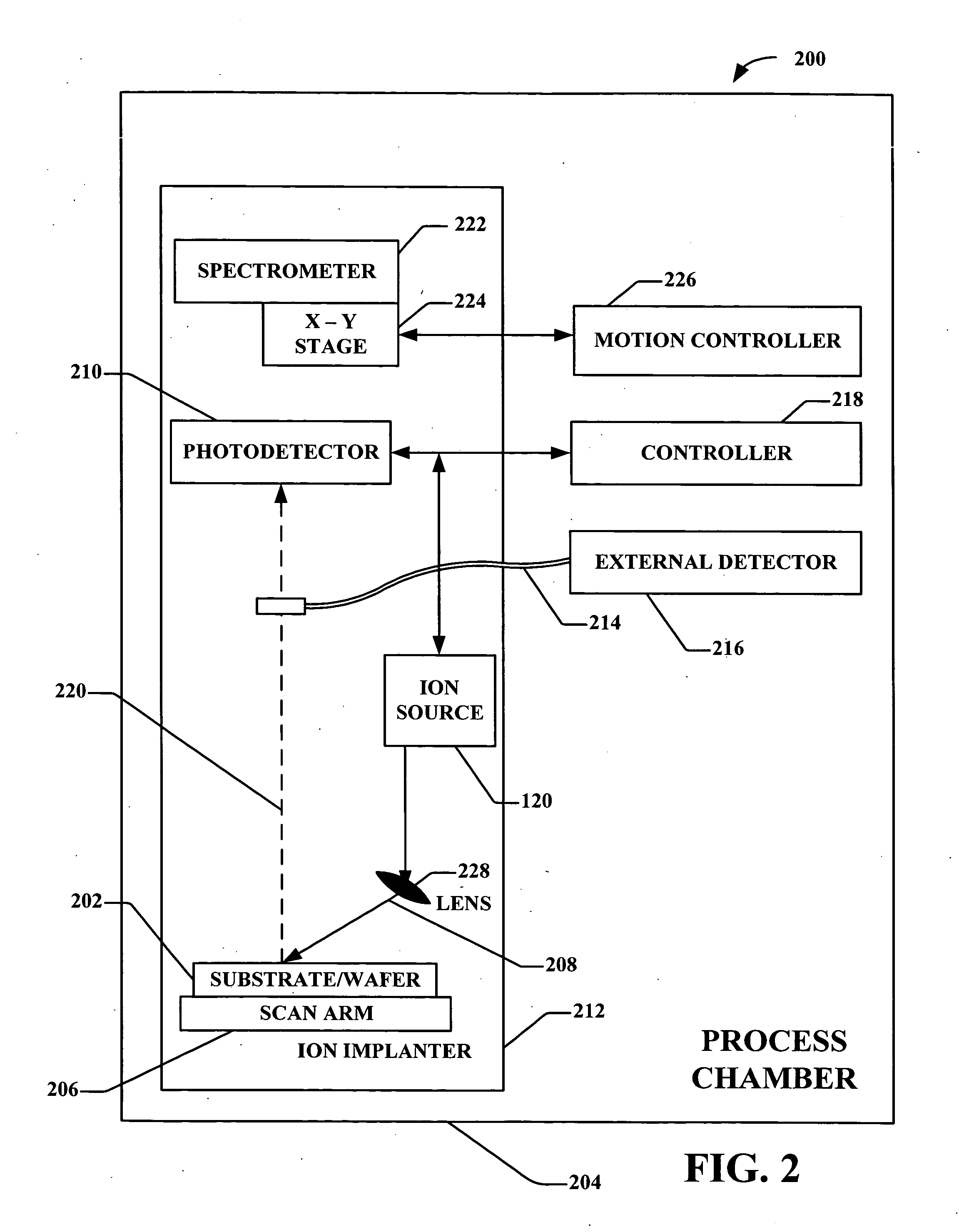Use of ion induced luminescence (IIL) as feedback control for ion implantation
a technology of ion implantation and luminescence, which is applied in the field of ion implantation for semiconductor processing systems, can solve the problems of practical monitoring methods, and achieve the effect of fast time response and accurate and fast detection times
- Summary
- Abstract
- Description
- Claims
- Application Information
AI Technical Summary
Benefits of technology
Problems solved by technology
Method used
Image
Examples
Embodiment Construction
[0024]The present invention is directed generally towards a system and method for employing ion induced luminescence when manufacturing or processing semiconductors using an ion implantation system. More particularly, the system and method provides an optimized approach based on one or more performance criteria associated with the ion source implantation system. Accordingly, the present invention will now be described with reference to the drawings, wherein like reference numerals are used to refer to like elements throughout. It should be understood that the description of these aspects are merely illustrative and that they should not be taken in a limiting sense. In the following description, for purposes of explanation, numerous specific details are set forth in order to provide a thorough understanding of the present invention. It will be evident to one of ordinary skill in the art, however, that the present invention may be practiced without these specific details.
[0025]Referri...
PUM
 Login to View More
Login to View More Abstract
Description
Claims
Application Information
 Login to View More
Login to View More - R&D
- Intellectual Property
- Life Sciences
- Materials
- Tech Scout
- Unparalleled Data Quality
- Higher Quality Content
- 60% Fewer Hallucinations
Browse by: Latest US Patents, China's latest patents, Technical Efficacy Thesaurus, Application Domain, Technology Topic, Popular Technical Reports.
© 2025 PatSnap. All rights reserved.Legal|Privacy policy|Modern Slavery Act Transparency Statement|Sitemap|About US| Contact US: help@patsnap.com



